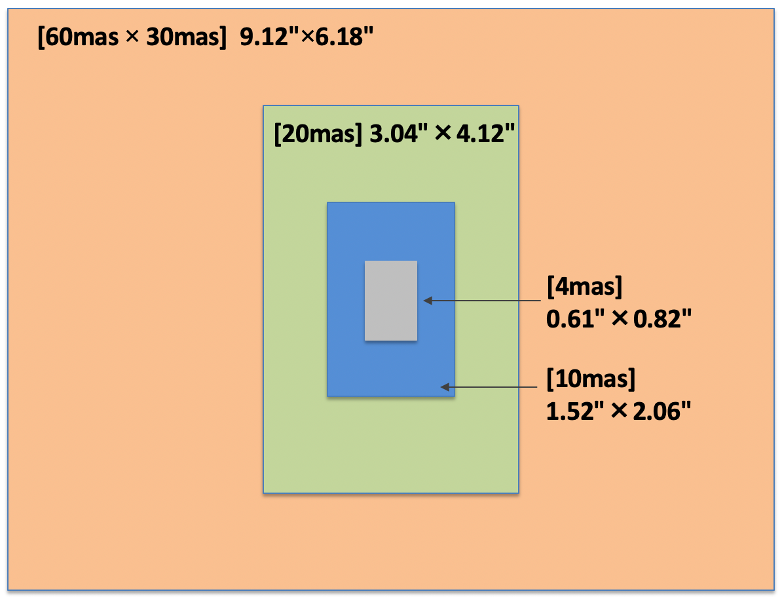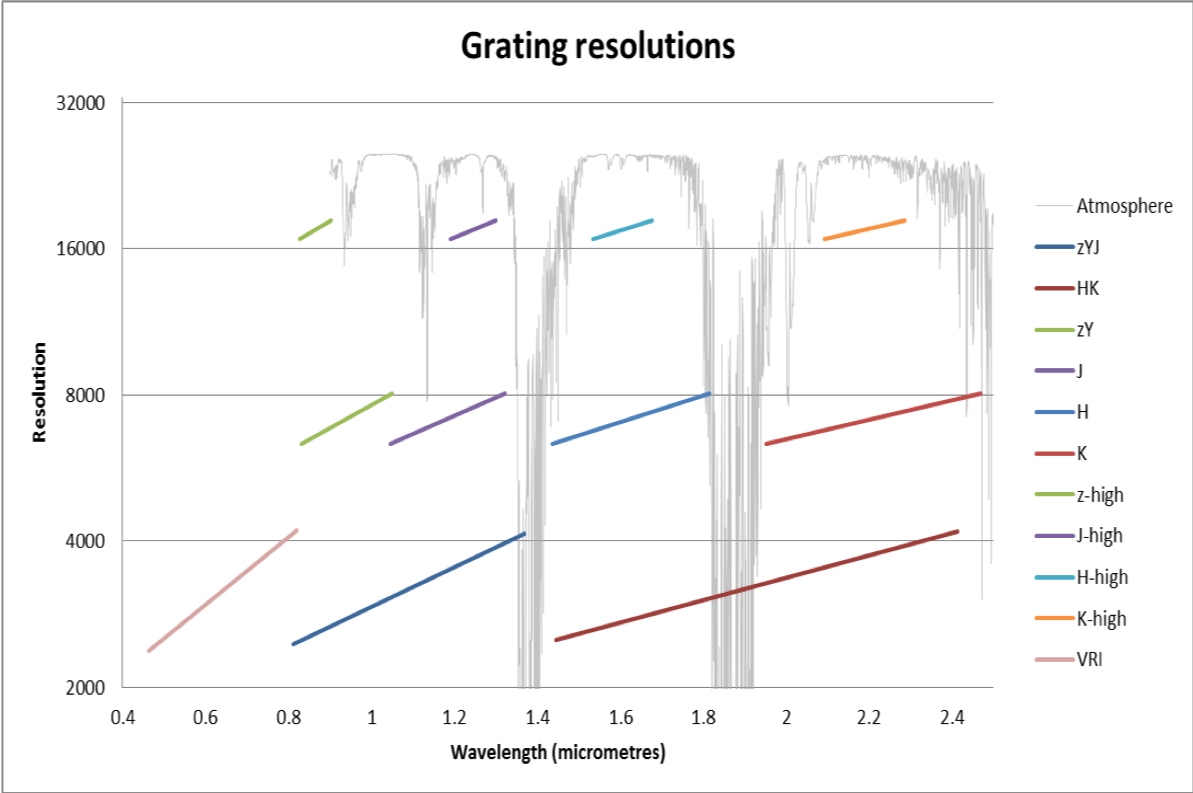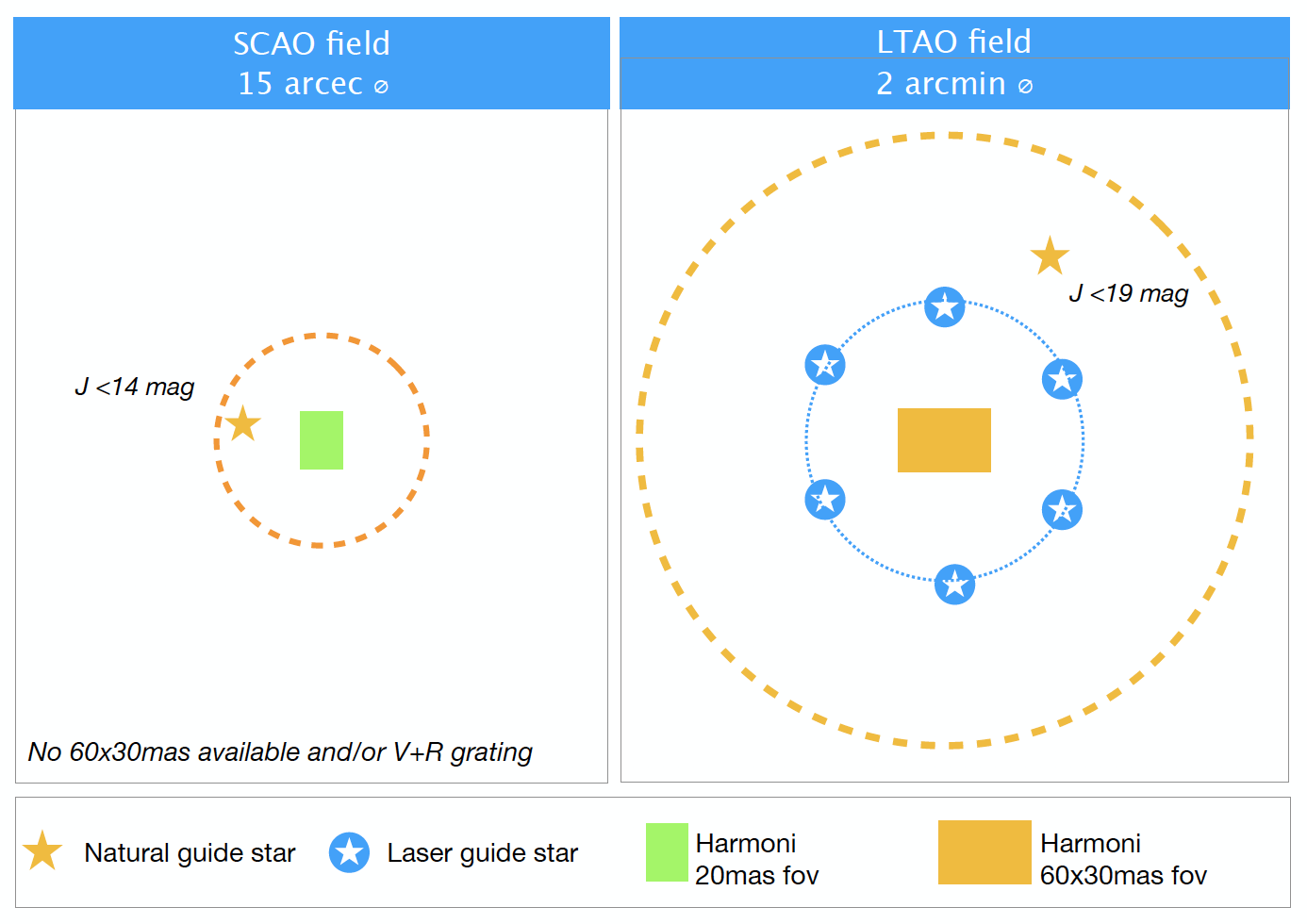Key specifications
HARMONI is the first light visible and near-IR integral field spectrograph for the ELT. It covers a large spectral range from 0.46µm to 2.46µm with resolving powers from R (≡λ/Δλ) 3,300 to 17,300 and spatial sampling from 60mas to 4mas. It can operate in two Adaptive Optics modes - LTAO and SCAO - or with no AO.
Field of view and spatial resolution
HARMONI has a field of view of 152×214 spatial pixels (spaxels) and ~4000 spectral channels per spaxel. There are 4 spaxel scales available (from 4mas × 4mas to 60mas × 30mas), which permit the user to optimally configure the instrument for a wide range of science programs. From ultra-sensitive to diffraction limited. The coarsest scale (30mas × 60mas spaxels) provides a 9.1″ × 6.2″ FoV, well suited to seeing limited observations, and the finest scale, a factor of 15 finer (4mas × 4mas), Nyquist sampling the diffraction limit of the ELT at near-infrared wavelengths. With its large range of spaxel scales, HARMONI can easily adapt to any flavour of adaptive optics - LTAO and SCAO -, or even with no AO at all.

| Scale (mas) | FoV | Comments |
|---|---|---|
| 60×30 | 9.1"×6.2" | For non-AO & visible observations |
| 20×20 | 3.0"×4.1" | For optimal sensitivity (faint targets) |
| 10×10 | 1.5"×2.1" | Best combination of sensitivity and spatial resolution |
| 4×4 | 0.6"×0.8" | Highest spatial resolution (diffraction limited) |
Spectral configurations
HARMONI has 11 spectral configurations covering the visible and near-IR spectral range from 0.46µm to 2.46µm with three spectral resolutions: ~3,300 (low-R), ~7,100 (mid-R) and ~17,300 (high-R).

| Band | R | λmin(µm) | λmax(µm) |
|---|---|---|---|
| V+R | 3300 | 0.458 | 0.820 |
| I+z+J | 3355 | 0.811 | 1.369 |
| H+K | 3355 | 1.450 | 2.450 |
| I+z | 7104 | 0.830 | 1.050 |
| J | 7104 | 1.046 | 1.324 |
| H | 7104 | 1.435 | 1.815 |
| K | 7104 | 1.951 | 2.469 |
| z-high | 17385 | 0.828 | 0.902 |
| H-high | 17385 | 1.538 | 1.678 |
| K-short | 17385 | 2.017 | 2.201 |
| K-long | 17385 | 2.199 | 2.400 |
Adaptive Optics modes
HARMONI operates in 2 AO modes or with no AO:- Single conjugate AO (SCAO). Natural guide star. Diffraction limited (10mas) 1% sky coverage. Suited for Galatic center or densly populated fields.
- Laser tomography AO (LTAO). Laser guide stars. Lower performance than SCAO but a higher sky coverage (50-90%)
- No AO (noAO)
